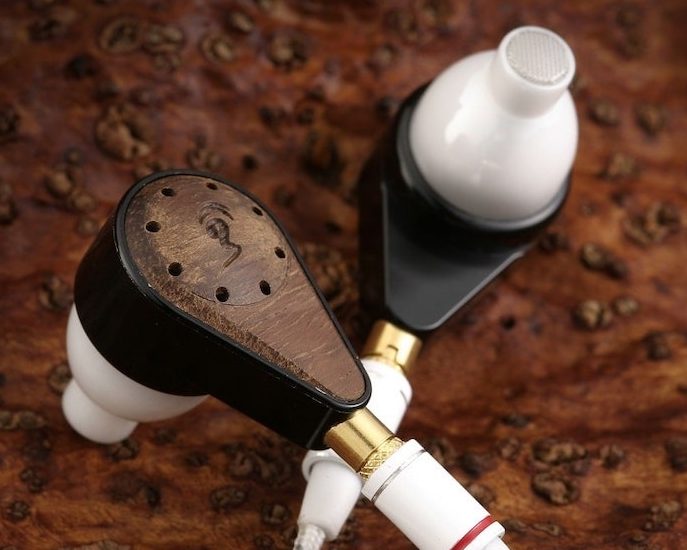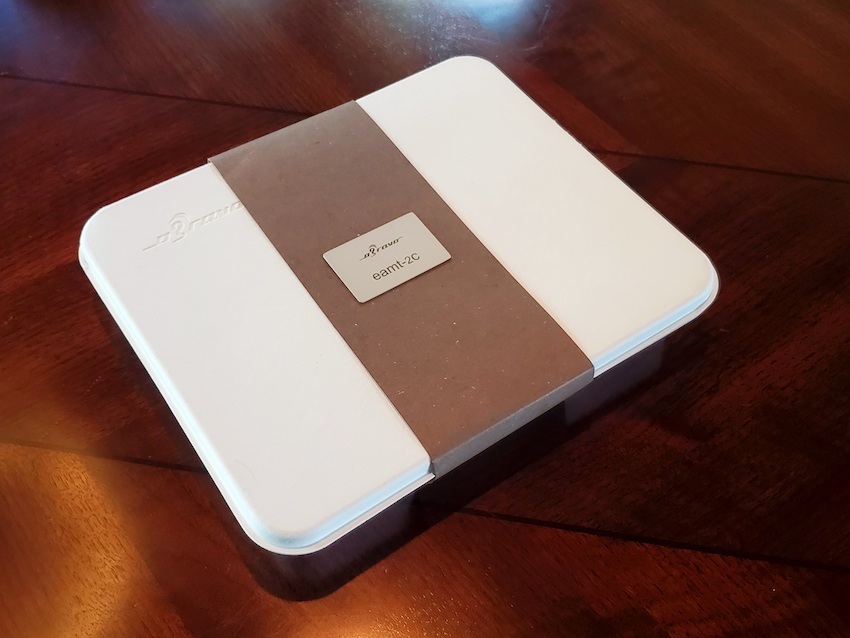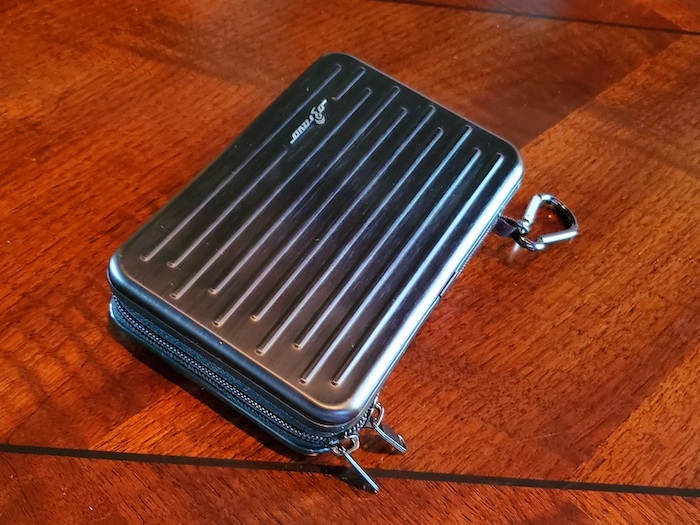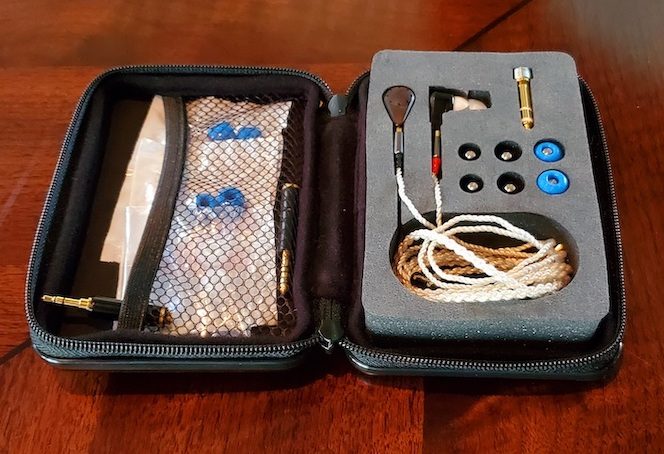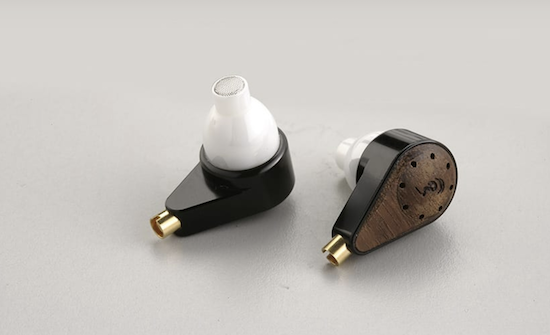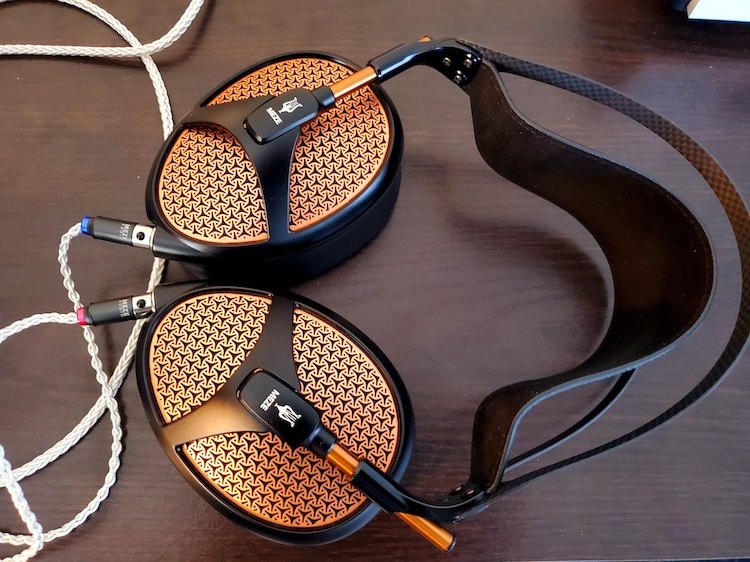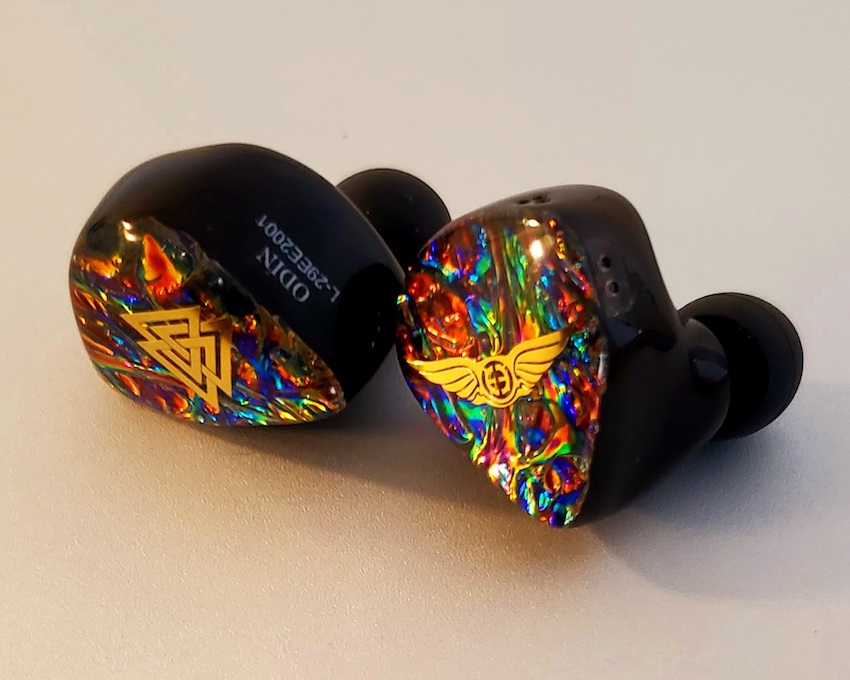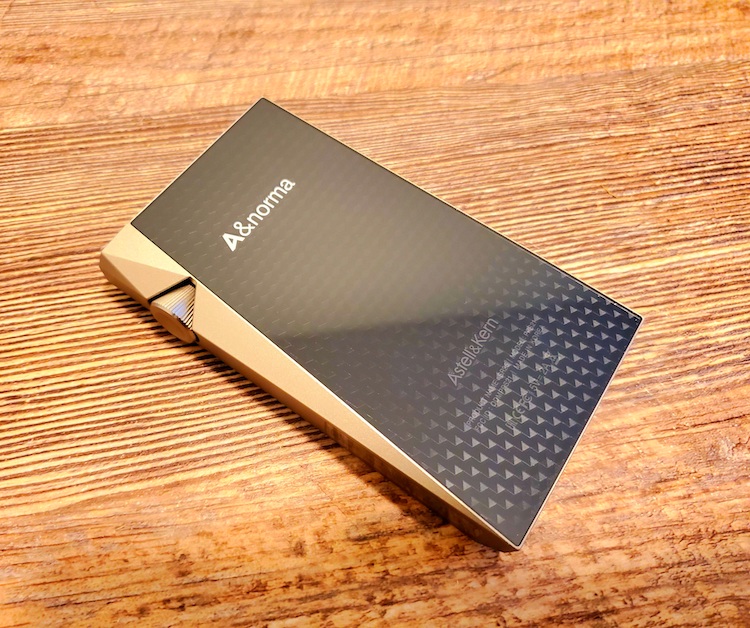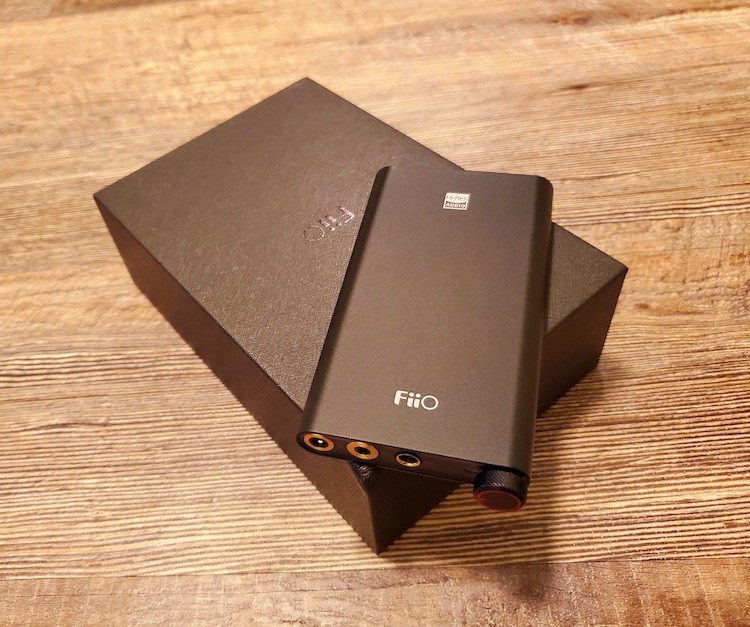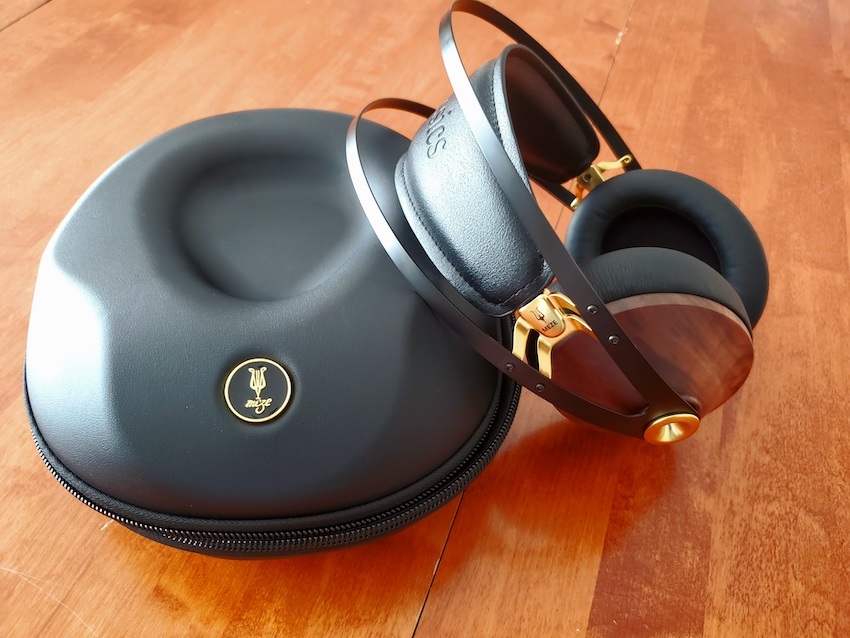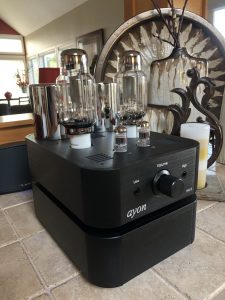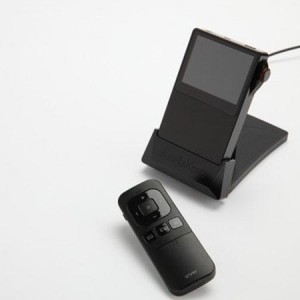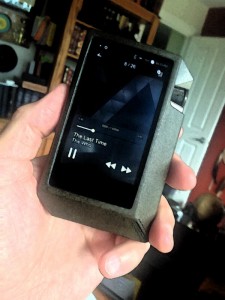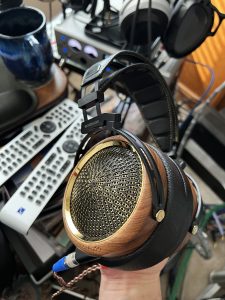We review products across a relatively narrow band, a niche, if you will. And our niche is dichotomous, generally, in that it supposes that great transparency and superb musicality can coexist in the same piece of audio equipment—headgear. Our research has revealed that we are, indeed, in a quite narrow niche, as manufacturers, to date, have sought to engage the professional—production, audio/movie recording engineers, etc.—who utilize headgear as a tool, primarily, in the service of their profession. Generally, this gear is "Neutral/Reference" or "Analytical/Bright," as the theory goes, in that it better allows them to pass on to the end-consumer a facsimile, a faithful reproduction, a simulacrum of the original performance/master tape, etc. However, with a literal sea of bad recordings drifting about there appears to be a flaw somewhere in this process. Or, perhaps, it's simply bad actors "goosing" the music for the widest possible audience, the L.C.D.1 or so they believe.
We take a decidedly different approach based upon our philosophy of "eating dessert first," that "chocolate is not just for breakfast anymore," and that "life is, truly, short." This leads us to research and search out headgear that is, above all, engaging musically, that captures the heart and passion, that promotes spontaneous chair/sofa dancing, that makes one smile or cry or laugh in remembrance of a revered emotional event. Isn't that what music is all about? And when have you ever attended an "Analytical" or "Neutral" or "Reference" concert?
So my reviews, to a one, will focus on headgear that is engagingly musical and, yet, astonishingly transparent (the mother of detail, micro and macrodynamics). And should the product/equipment in question not meet this requirement, back it goes unmentioned and unreviewed, which dovetails with another philosophy of mine—do no harm—as reviews are very subjective, while businesses are not.
This brings us to my review of the Obravo EAMT-2C In-Ear-Monitor (IEM). When I received the Obravo EAMT-2C, I knew very little about the company and even less about the IEM in question. Naturally, I wanted to see if they would be in line as "keepers for review" or "immanently returnable." Upon first listen (straight out of the box!), the resident cynic in me had to "figuratively" lift his lower jaw from the floor. How can this be, I asked? Here was an IEM that had audacity to act as if it were an "Over-the-Ear," planar-magnetic headphone of truly exceptional capability, right out of the box!
I immediately emailed Obravo to determine if the EAMT-2C had been burned in, or if they were brand new. Obravo's reply was, "brand new, and will need at least 120 hours of burn-in." This evoked momentary catatonia, but was also incredibly exciting. How good would they actually sound after the required 120 hours of burn-in? Out of the box they were pretty much top of the IEM heap, to date, and superior to a number of very high end headphones (that I've owned). And the Obravo EAMT-2C were very firmly planted (cemented) in our niche—sublimely musical, breathtakingly transparent.
Refrain: Unlike most reviews, this review will be non-sequential, as it will start with how the headphones actually sound and not the process of physically "undressing" them and/or laying out their various parts, specifications, etc. Think of this review then, as a non-linear movie—Memento, Kill Bill, Pulp Fiction, etc—that, likewise, starts at the end and winds its way to the beginning.
The Sound
A smile covers my face, as I begin this review. Wow! Perhaps what makes the Obravo EAMT-2C so impressive is all that incredibly gorgeous music lies, "…In a itty bitty living space."2
When the 120 hours of burn-in had been granted to the Obravo EAMT-2C things got even more interesting, after this reviewer, figuratively, lifted his jaw, once again, from the floor. Suffice to say, that many IEMs heard up to this point, quickly fell to the wayside in direct comparison with the Obravo EAMT-2C. The EAMT-2C's ability to move mountains of air, its lightening-fast transient speed, its ability to grasp and hold tight the "Holy-Bass-Head-Grail," its transparency and gorgeous musicality were spellbinding! Was it the Air Motion Transformer (AMT—see below) as allied to the Neodymium Dynamic Driver (NDD)? The clarity, the texture, timbre, tone—spectacular(!)—and, truly, MUST be heard to be believed. I was familiar with the AMT driver as employed in speakers and headphones to good effect, but never in an IEM. This was new and profoundly so. Could it be the perfect implementation of the AMT?
Omar Sosa's "Aguas" (Calma, World Village) plays, and the beginnings of children playing in a body of water rises into focus. A child's voice hovers over the movement, the splashing. The Obravo EAMT-2C has given the water, the splashing mass, weight, movement, three-dimensionality, as volumes of water large and small rise and then fall to rejoin the body. The realness, the naturalness of it heretofore unheard. Omar's piano enters with weight, gravitas as the notes reverberate and decay. Tone and timbre are more rich, more natural than I have ever heard. I chair-sway and bop to the music affected, happily and, in truth, stunned.
The Obravo EAMT-2C's volumetric cube—its soundstage—is generous in the extreme, wide, deep, of very good height and effortlessly constructed. I listen to Wynton Marsalis' rendition of "Stardust" (Standards & Ballads, Columbia—Legacy) and it begins hauntingly, as violins swirl to set the stage. Wynton's trumpet enters, center stage, it too is ethereal and haunting, the stage is wide, layered, holographic. Branford's saxophone enters stage right, solidly positioned, three dimensional at depth. The Obravo EAMT-2C is at it again delivering a profound performance, that is rich, detailed, extended without the slightest insinuation of sibilance, grain, etch, stridency, etc.
The Obravo EAMT-2C was paired with the Cayin N6ii/A01, Cayin N6ii/E01, Burson Audio Conductor 3X, AudioQuest DragonFly Cobalt/Red, and the iFi Hip-Dac for this review. All drove the EAMT-2C easily and all performed exceptionally well. Obravo considers it mandatory for 120 hours of burn-in prior to one's optimum listening enjoyment (though it will sound quite incredible right out of the box!).
Bass
David Holland's "Spheres" (Emerald Tears, ECM) plays with taut weight, is breathtakingly transparent, hyper-fast, and captivating. It is one of the best renditions of this track that I have heard and certainly from an IEM. I am compelled to stay with this solo bass album recorded in 1978, so remarkably proficient is the Obravo EAMT-2C (as allied to the Cayin N6ii/A01) at rendering its music. "Under Redwoods" plays what I'd call a "rhetorical," instrumental call-and-response. David's fingers move with amazing speed and dexterity and are rendered as if in anticipation—blazingly fast—by the EAMT-2C. And it's just plain fun to listen to! The mood then changes and the tone is now melancholy, the notes deep, resonant, beautifully, incredibly engaging. The microdynamics of fingers sliding down/up David's bass are duly captured.
Midrange
Erykah Badu's "Next Lifetime" (Baduism, Universal) plays and there is a supreme clarity that lifts, strips away layers of opacity, making the introductory conversation crystal-clear, emotion-rich, intimate, and of beautiful timbre and tone. We've slipped into another track from Badiusm—"Certainly"—and Erykah serenades, her voice weighty, rich, sublime, the stage deep, the backup singers aligned along it, their positioning distinct, rock solid. The detail, clarity, nuance freed across this album in a manner so natural, so rich, so smooth, with so much gravitas as to, possibly, rival an analog rendering, incredible! By the way, (yes, this is a midrange analysis) the bass is prodigious and prodigiously rendered across this entire album, by the Obravo EAMT-2C IEM. Simply amazing! How the $%#&@ can this be? AMT/NDD?!
Treble+
The Kronus Quartet's "Aaj Ki Raat" (Tonight is the Night) (Kronos Caravan, Nonesuch) is a pastiche of exotic instruments—Hindustani tabla, Lebanese nay, Iranian kemancheh—and, of course, the instruments of the Quartet—violins, viola, cello. "Aaj Ki Raat" begins and a triangle resonates with crystal clarity at the stage's rear, Ustad Zakir Hussain's tabla beautifully anchors the piece with an amazing tangibility and resonance. A violin and then violins intercede and float high above the mix, vibrant, spacious, airy. A strummed cello to the rear seasons this exotic mix. The Obravo EAMT-2C is flawless, again, lightening fast, incredibly extended, and its rendering emotionally breathtaking. And never is there stridency, harshness, or sibilance, never.
The Wrappings and Accessories
Hmm… I found the packaging of the Obravo EAMT-2C curious, at best, if not a wee bit disappointing. Here was a $3000 pair of IEMs housed in a cardboard box, not dissimilar from a take-home-carton. Thinking that something was amiss, I reached out to a very gracious David Teng at Obravo to find out the "Why" of the EAMT-2C's outer packaging. And was told the following (paraphrased):
"We designed the package in consideration of being environmentally friendly, as we are a small company that seeks to do our part to reduce carbon emissions. The package is part of our strategy and will remain in place for the foreseeable future."
Okay, small company, humble, with an environmental friendly justification. Who can possibly argue with that reason, given the times? Not I. However, how about a simple, cost-effective, bamboo-constructed, containing box? Sorry, it's the designer in me.
That said, what is inside the box is what truly impresses, as well it should. There is a black, medium-large, nicely designed, zippered, hard case, that holds a bevy of goods and, of course, the Obravo EAMT-2C IEMs—the gold. While the hard case will definitely not fit in one's pocket, it will easily fit in briefcase, book bag, purse, backpack, shoulder bag, etc.
The other goods included are:
- 1 black housing, gold plated jack 2.5mm to 3.5mm adapter
- 1 black housing, gold plated jack 2.5mm to xxx adapter
- 3 sets of Comply foam tips (small, medium, large)
- 3 sets of silicone tips (small, medium, large)
- 3 sets of ear hooks (small, medium, large) for extracting (?) the various ear-tips
- And finally, there is a 1.2m white, braided MMCX cable terminated with a 2.5mm gold-plated jack.
Design - Look, Feel, and Technology
The Obravo EAMT-2C themselves are beautifully wrapped in a mix of materials—Acacia Wood, a black aluminum alloy, and "advanced ceramics." The Acacia wood forms the EAMT-2C's back cavity, while the aluminum alloy forms the outer housing, and the advanced ceramics the front cavity. Why these materials? As Obravo explains:
Thermo-modified acacia wood: We carefully select the wood of acacia confusa grown natively in Taitung county processed with thermo-modification, thus producing a unique material whose superb acoustic quality is recognized even by the Spanish guitar master artisan Mr. Adolfo Timuat Toyoda.
Advanced ceramics: For the structure of our earphones, we use the advanced ceramics kiln-fired at a temperature of over 1800 °C, which can convey every detail of the high notes, rendering their sound resounding and crystal clear.
Taylormade metal structure: Aluminum/Titanium/copper: as each of them produces its own distinctive sound when made into earphones (and thus allows for a particular running based upon the selection of metal chosen for one's custom IEM).
The materials come together beautifully to form a quite handsome and rather luxurious enclosure, which more than makes up for the outer box. And with regard to the efficaciousness of the combined materials in regard to sound, as noted above (see: SOUND), truly exceptional!
Technology: The Obravo EAMT-2C employs dual technologies—an 8mm Air Motion Transformer (AMT) as its tweeter and a 13mm Neodymium Dynamic Driver for mid/bass frequencies—in a hybridized fashion.
The AMT technology was invented by Dr. Oskar Heil (1908–1994) and had a patent (US3636278A) issued January 18, 1972.3 The AMT technology employs a bellows-like, pleated diaphragm that:
"Moves air laterally in a perpendicular motion using a metal-etched folded sheet made of polyethylene terephthalate (PET) film…
The result is a dipole driver with an extraordinarily rapid response rate, enabled by the extremely low mass of the polyethylene substrate and the far smaller distance it travels on each "swing" compared to a dynamic driver…
The discernible motion of each diaphragm flexure is very small, but because of the folded structure, more air is moved than would be by a conventional cone or electrostatic driver of the same plotted surface area."4
A Neodymium Dynamic Driver (NDD) that Obravo uses for the EAMT-2C utilizes Neodymium magnets, which are known for their magnetic strength relative to their size/weight, despite their higher costs.5
The combination of the AMT and the NDD as employed in the Obravo EAMT-2C is, as mentioned above, absolutely stunning!
Specifications
- Back Cavity: Acacia Wood
- Outer Housing: Aluminum Alloy
- Front Cavity: Advanced Ceramics
- Frequency Response: 18Hz~45KHz
- Tweeter: 8mm Air Motion Transformer Tweeter
- Dynamic Driver: 13 mm Neodymium Driver
- Impedance: 16 Ω
- Sensitivity: 105dB
- Weight: 35 g
The Obravo EAMT-2C due to their low impedance (16Ω -Ohms) and high sensitivity (105dB) are easy to drive, which translates to a little power goes a long way and thus they may be used with a very wide variety of smartphones, DACs, DAPs, etc.
Conclusion
The Obravo EAMT-2C offers remarkable top to bottom coherency, truly breathtaking tonality and truth of timbre, stunning transient speed, and near peerless top to bottom extension. It is, perhaps, the most incredible, if not the best IEM that I have ever had the opportunity to review, let alone listen to. And given the fact, that I've never heard the AMT/NDD combination implemented in another IEM prior, there is mounting evidence that this was, indeed, a masterstroke of design engineering!
The Obravo EAMT-2C, like the Cayin N6ii/A01 before it, easily wins our HIGH NINES AWARD for incredible transparency, musical excellence and sublime, natural tonality.
NOTE: I have been in the audio industry for a very long time, have owned systems constructed, from far too many high-end companies, and have even owned two, high-end, audio boutiques. This has all made me rather cynical in all things "audio." Yet, I have written back to back reviews praising and awarding three pieces of audio gear! What's wrong here? And, for the record, I have no vested interest in ANY of the products that I've reviewed. None. So, in truth, I'm probably more surprised than you, the reader. There, that's it.
We do, however, send back those pieces, unnamed and unreviewed, that don't meet our tuning expectations—musical, transparent—because as music lovers, we cater to music lovers. So, you're getting the good, musical equipment and not the ‘Reference' or ‘Analytical/Bright' equipment and certainly not the latter posing as ‘Musical' equipment.
Music - Qobuz exclusively
- Alexander Tharaud, Tharaud Plays Rachmaninoff
- Omar Sosa, Ballads,
- Omar Sosa, Calma
- Patricia Barber, Verse
- Rickie Lee Jones, Pop Pop
- Sade, Lovers Live
- Sheku Kannah Mason, Inspiration
- Tracey Chapman, Where You Live
- Olafur Arnalds, Island Songs
- Melody Gardot, My One and Only Thrill
- Melody Gardot, My Worrisome Heart
- Eiji Oue, Rachmaninoff: Symphonic Dances
- Hilary Hahn, Tchaikovsky
- Mechell Ndegeocello, Bitter
- Jordi Savall, Tous les Matins du Monde
- Maxwell, Maxwell's Urban Hang Suite
- Sarah Jarosh, Undercurrent
- Igor Stravinsky, Stravinsky: Le sacre du printemps (The Rite of Spring)
- Annie-Sophie Mutter, Mendelssohn, Brahms: Violin Concertos
- London Grammar, If You Wait
- Stevie Wonder, Innervisions
- Marvin Gaye, What's Going On
- Miles Davis, Kind of Blue
- Jóhann Jóhannsson, Orphée
- Alexis Ffrench, Evolution
- Dave Holland, Emerald Tears
- Gidon Kremer, Daniil Trifonov, Giedre Dirvanauskaite, Preghiera/Rachmaninov Piano Trios
- Joan Shelly, Joan Shelly
- Magdalena Kožená, French Arias
- Andy Bey, American Song
- Erykah Badu, Baduism
- Kronos Quartet, Kronos Caravan
Ancillary Equipment
- Cayin N6ii/A01
- Cayin N6ii/E01
- Burson Audio Conductor 3XP
- AudioQuest Cobalt
- AudioQuest Red
- AudioQuest Dragon Tail
- OBravo EAMT-2C IEMs
- Final Sonorous III
- FiiO FH5
- Samsung S10
- Apple X iPhone
EAMT-2C IEM
Retail: $3000
Obravo
Stymax International Co., LTD.
4F., No. 495, Guangfu S. Rd., Xinyi Dist.
Taipei City 11074, Taiwan R.O.C.
Kermit Heartsong is a published author, writer, and working screenwriter, who brings an established writer's approach/perspective to Personal HiFi reviews. Kermit has owned numerous high-end and ultra-high-end components/systems and has tested numerous pieces of audio gear over the course of his life. And he is a music lover first and foremost with regard to the types of Personal HiFi equipment that he enjoys and enjoys to review.
In conjunction with Positive Feedback, Kermit, as an Associate Editor for PF, will focus on Personal HiFi and Headphones for the venerable and long standing audio magazine. Kermit is currently Managing Director of AudioKey Reviews. AudioKey Reviews' mandate is to review Personal HiFi equipment from headphones to DACS to Amps/DAC to IEMs and, in doing so, to seek out that which is, above all, musical, transparent, and engaging.
1 Lowest Common Denominator
2 Genie - Aladdin, Disney 1992
3 United States Patent Office
4 Wikipedia - Air Motion Transformer (not a source generally used but…)
5 Forbes - Glossary of Headphone Terms




